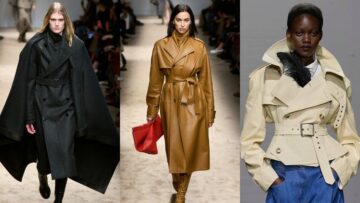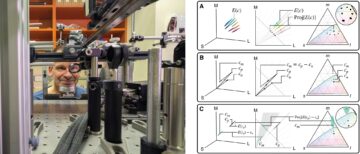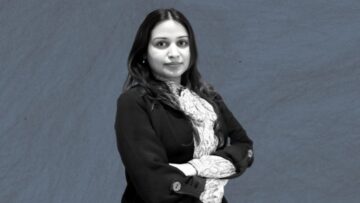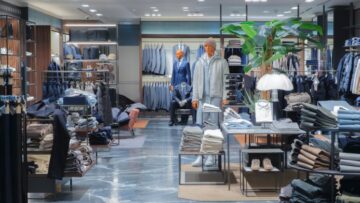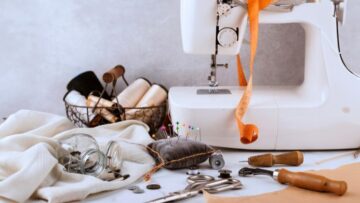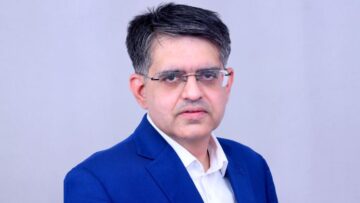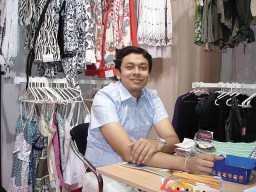
The Igedo Fashion Fair for Spring/Summer 2009 was held in Dusseldorf, Germany and the directions for the Indian exporters in the Global Fashions section were very positive. From the 35 Indian exhibitors, 19 were brought under the AEPC umbrella. Meher Castelino reports from Dusseldorf.
Indian products are of a slightly higher value than those made by China and Bangladesh. This time there is more of women’s/kid’s with some exhibiting men’s wear,” said Vimal Kirti Singh, Secretary General AEPC who was confident that Indian exports will score well for 2008. According to Singh, the figures for April/May 2008 have been higher by 12-17% compared to April/May 2007 which had just a 4% rise. Singh is also looking hopefully at 2008.
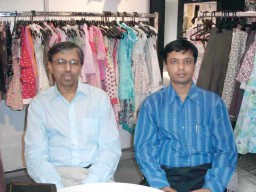
Amongst the 19 exhibitors there was a lot of positivism regarding the next season as they looked at the future with hope. The main items were tops and dresses with a few skirts in woven and knits. The return of the Indian look will be a great opportunity for Indians to strike for orders.
Excel Hosiery Manufacturers and Exporters from Tirupur, received buyers from Australia, Russia and European countries for men’s women’s and kid’s knitwear. “We are specialists in viscose Lycra and cotton Lycra for fashion items with some embroidery,” revealed K Natarajan, Managing Director of the company. “2007 was very tough for the whole knitwear business in Tirupur but 2008 will be better. We are hoping for a 10-15% increase this year and since we want to break into Europe this is our first time at the Igedo. We export large quantities to USA and Canada to get a turnover of Rs 15 crore.”
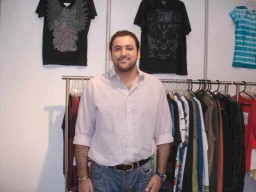
With 50-60% business in the USA, Saurabh Sekhri, Executive Director of Trendsetters International, took part in the Igedo for the first time to balance business with Europe. Buyers from Belgium, Denmark, Poland, and Spain were interested for Spring/Summer 2009 in blouses and dresses with computer, machine and hand embroidery along with bead and sequins work but very clean embellishments. “We hope the enquiries turn into orders but there is a 50-50 chance.
We also go to Hong Kong, MAGIC and Moscow. 2007 was good for us but could have been better. But 2008 will be a change for the better. We are expanding with a new plant for knits and woven in Manesar near Delhi and feel Europe will be a better market for 2008-09 while USA will be better in 2009-10. Our growth rate in 2008 will be 5-10% to add to our Rs 150 crore. But while the average FOB price will grow, quantities may go down because of the USA market,” felt Sekhri. Value addition still plays an important part for Indian products whether they are knits or woven. Return of tie-n-dye and sequins embroidery is to India’s advantage.
[bleft]The AEPC was participating for the first time with a contingent at the Igedo Fair, although the council has taken part in MAGIC at Las Vegas and will now be going for the CPD Moscow Fair in September 2008[/bleft]
It was Ravindra Singh of Inspiration, India’s first time at the Igedo with AEPC and he hoped that 2008 will add a growth rate of 15-20% to the company’s US $ 2 million turnover. “Buyers from Belgium were looking for collections of dresses, tops and skirts. Our strength is prints which are created in Jaipur. 2007 was mediocre because of USA but Europe, Japan and Australia were good,” added Singh.
It was also the first time for Surinder Singh and Manbir Singh Oberoi, Partners of M S International. 13 years in the business the pair goes to MAGIC and is hoping for a 15% growth to their Rs 15 crore turnover since embroidery is back in fashion. “We export to Europe and USA but 2007 and 2008 are similar in business. The German buyers we got were interested in ladies tops and tunics with more prints and value addition.”

Pragnesh Jariwala, Partner, Paras Industries after MAGIC and Hong Kong, felt he should try the Igedo for his 18 years old company dealing in women’s/kid’s wear with a Rs 35 crore turnover. Already exporting to UK, Ireland, Germany, France and USA, Jariwala was happy with buyers from Denmark and Germany who were looking for high fashion ladies dresses and tops in cotton, silk, viscose and jersey.
“2007 was not very great since the Indian look had decreased. There was no growth but we maintained quantity. The early trends for 2008 are good with tie-n-dye and embroidery returning for next summer so hope for a 30% growth.” Jariwala feels that Fair participation has to be consistent, and observes Igedo is better for the company since fashion items are the basis, while at MAGIC it is volumes. For hand-embroidered pieces, Jariwala accepts 1200-1500 pieces while for basics 3000-4000 pieces. Jariwala adds, “Price difference between China and India is now 20% instead of 30%. The international policy is also not to promote China. Unconventional markets are good but to succeed one must be regular with a long-term investment strategy.”
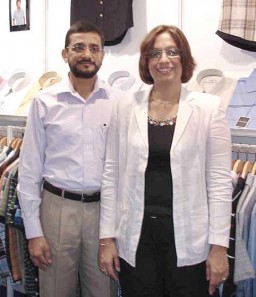
One of the biggest exporters at the Igedo was Richa Global Exports Pvt. Ltd., a Rs 600 crore company that has never taken part in Fairs since 70% of its business is in USA but now wants to increase it in Europe. The 31-year-old company had a tough 2007 with sinking dollar and rising wages. “We have 16 factories in Gurgaon and 24,000 workers for whom the daily wage bill is US $ 300 million so we are looking for big customers. We make women’s knits, leather wear but only brought knits here.
I have met some companies in different halls and had a fruitful talk with them. 2008 will be better since China has become expensive so India is getting new buyers like Ralph Lauren who is making 20,000 knits with us for Spring/Summer 2009 for us. Tie-n-dye is hot along with burn out washes and garment dyeing. Our growth in 2008 will be on par with 2007 but in 2009 it will increase by 25% in knits,” said Gaurav Uppal, Richa Global.
Some of the exporters who preferred to go solo were also very satisfied with the type of buyers they got. This could probably be the first time that Indian exporters were happy with their visit which seems very encouraging.
[bleft]Value addition still plays an important part for Indian products whether they are knits or woven. Return of tie-n-dye and sequins embroidery is to India’s advantage[/bleft]
Kirti Shah, Director, Trendz Creations had a mix of ladies, kids, men’s wear and was happy with the buyers from Spain, Europe, UK, Germany, Turkey and Israel although the company is already exporting to Europe and has a US $ 10 million turnover. A regular at the Igedo, Trendz Creations’ sales breakup is 40% women’s, 30% men’s and 30% kids for the sales. Their hottest sellers were men’s wear. “But in the past the buyers wanted a basic look, now it is over dyeing, patches and now even for ladies fancy tops with little sequin embroidery on cotton are doing well. Prices range from US $ 4.50 to $ 9 for a minimum quantity of 600-800 pieces per colour though Shah prefers 1200-1500 per colour.
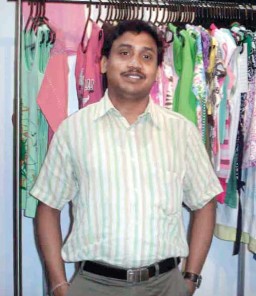
For him 2007 was okay and is hoping for a 25% increase in 2008 since April/May was good. “We also go to Hong Kong, MAGIC, Helsinki, Russia and IIGF and the buyers from Germany and Spain we met last time have turned into good orders,” he added with satisfaction.
S P Mundra of Rajat Collections, got buyers from Portugal, Spain, Holland and Russia who were looking for knits. “Russia wanted high-end items in double mercerized stripes and solids for polo shirts. Our specialty is the new suede knit jersey which is very popular.” 2007 wasn’t a great year for him but Europe was the saving factor since USA was on the down slide.
The company has good buyers in Canada and USA for 100% cotton knits in the price range € 3.50-8.50. This is Mundra’s fifth time at the Igedo having participated in Hong Kong, Moscow, IGF by ITPO. He doesn’t see a change in 2008. “It may only happen when Canada and USA start asking for more. At the Igedo, it is price not volume. Many want 200 pieces which we refuse. Our minimum is 400 pieces per colour. 2009, however, will be a turn around. Fortunately, there is no bargaining on the higher prices and Bangladesh is not our competitor since it can’t give smaller volumes.”
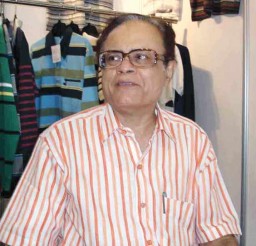
One of the best stands was Nafeez Fashionz who had a giant plastic revolving cube at the top which was very eye-catching. Buyers from Germany, Greece, Croatia, Lithuania and Poland were interested in their hot selling 260s mercerized double knit Tees. “Our yarn dyed shirts and ladies young fashion tops are also doing well. 2007 was slow because it was very competitive but we were able to sustain our business because of communications and the buyer’s loyalty.
We are very positive about 2008 but price is an issue. Since China, Bangladesh and Turkey are having problems. Buyers are looking at India, so 2009 will be a good year since the Indian look is returning but not the ethnic one but with a fusion touch,” revealed Maria Hussain of Nafeez Fashionz. For Hussain who is expecting a 30% growth over 2007 to add to the Rs 10 crore turnover Fairs are the only avenue for marketing and getting orders. “Europe is our main market but we are diversifying into USA too,” she added.
[bleft]In the past the buyers wanted a basic look, now it is over dyeing, patches and now even for ladies fancy tops with little sequin embroidery on cotton are doing well[/bleft]
Niraj Pugalia, CEO, Silver Apparels has been coming to the Igedo twice a year and this time he looked rather happy as buyers from UK and Germany kept him busy. For him women’s printed dresses give him the necessary turnover and 2007 was a good manageable year and he is optimistic about 2008 hoping to do 25% higher turnover than Rs 9 crore. A regular at Hong Kong and MAGIC, Pugalia states, “Fairs are not cash and carry, but expose us to what others are doing and the competition as well as a good avenue for trends. As far as China is concerned it is a positive factor for us. Buyers are now looking at us since China has become expansive due to the investment in manufacturing structures. But still nearly 80% of the goods in stores are from China.”
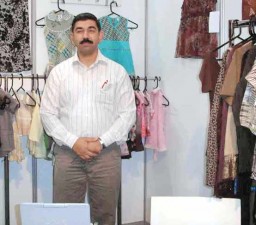
“After the quota end, the turnover in India increased by 37% then it was 4% and after that 12-17%. If we can average 15-20% this year, we will be happy. We have asked for a higher duty drawback of 14% as against 11% last year,” said VK Singh who feels that costs have increased, but India is still very competitive. With increasing competition, many exporters are suffering since labour has to be paid well. “We participate in 15-16 Fairs abroad every year.” According to Singh, Fairs are important now due to increased competition. “Those who were not participating are doing so now.
There are 50 companies who average Rs 2000 crore turnover and some of them are here.” Singh informed that AEPC has 2 IIGF Fairs and two other Fairs, specific to knitwear held in Tirupur, and would like to add two more under the Council umbrella. Singh is also positive about 2008-09 hoping for an estimated turnover of Rs 46,000 crore which will depend on factors within the country as well as the USA and EU. “We are also improving men, materials, and machines which will be all conducive to environment by bringing in knitwear and nano technology trying to make good indigenous machines and good labour laws which are not too rigid.”
It is good to know that the export side of the business seems to be looking up, even if the inflation in the country is making people glum.

